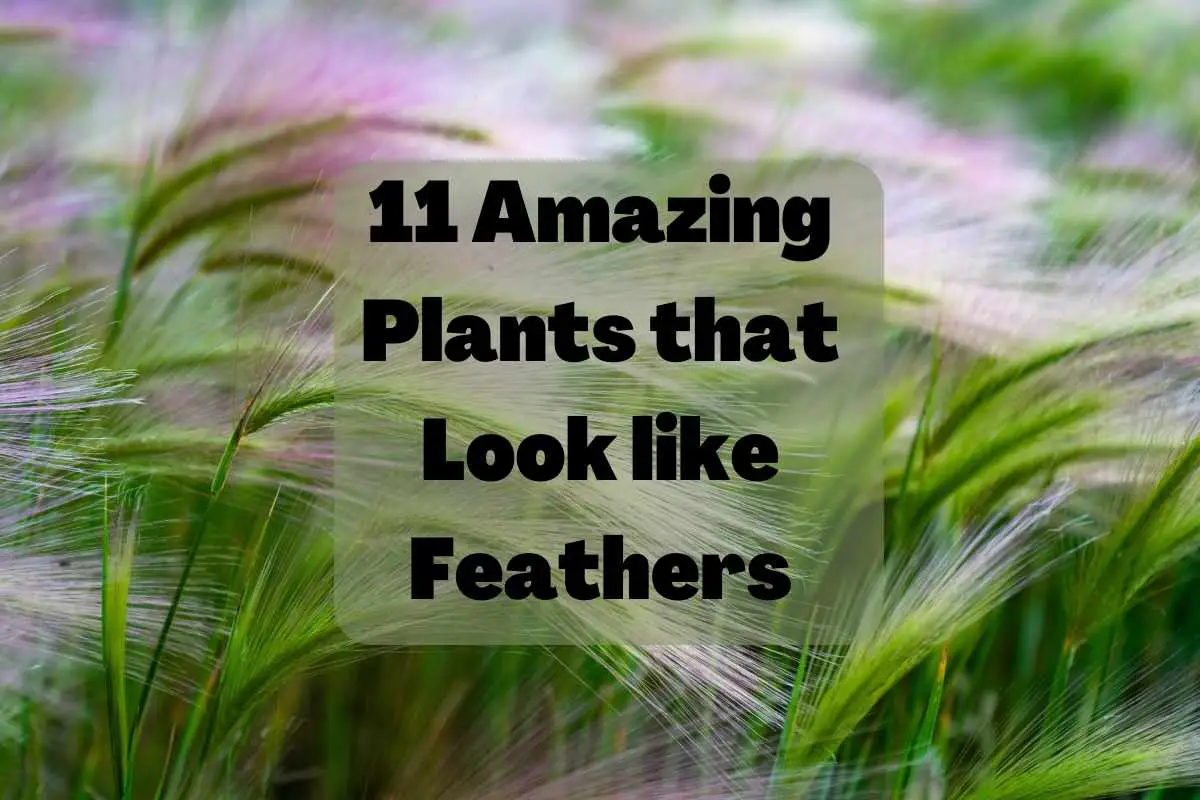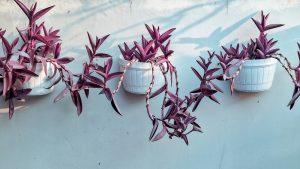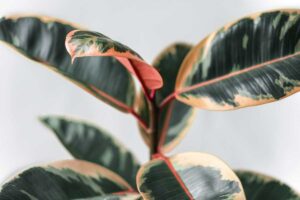Plants make an appealing addition to any garden, and the world has an endless supply of them. However, their appearance differs from species to species, ranging from normal to unusual.
Among the various wonders of nature, some plants look like feathers, an interesting sight to behold.
The guide below will help you first discover the various feathery plants available. Then, learn where to grow them best and how to take care of them.
Peacock Plant (Calathea makoyana)
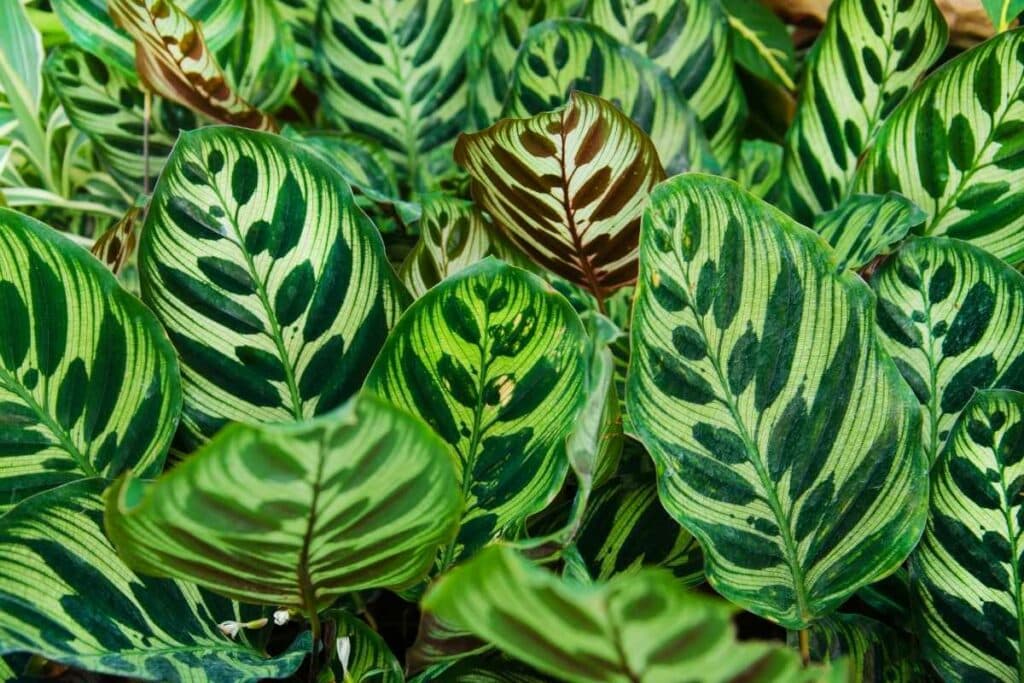
Indoor plant enthusiasts claim that growing peacock plants can be difficult. However, as long as you are keen on the requirements and conditions, they will thrive.
Calathea peacock plant has a distinct appearance. It has large leaves in different shades of green or sometimes purple.
On the inside of the leaves, the dark markings resemble feathers.
The Peacock plant is native to Brazil but can grow worldwide as an indoor plant.
They grow in their natural habitat in humid, warm, and wet conditions. As a result, ensure you provide as much humidity as possible.
For example, place water bowls near the plant in a warm part of your house or place them on pebbles for transpiration.
Additionally, you can use a humidifier as it mimics the naturally humid native environment.
Ensure the plant receives moderate light and avoid over-fertilizing the soil. The foliage should always remain green.
Any color changes may be a sign of phosphorous from excess fertilizer or fluoride from water.
To prevent these changes, frequently dissolve the fertilizer in the soil by watering the plant.
Additionally, remember to use rainwater or distilled water that is fluoride-free.
Jacaranda (Jacaranda mimosifolia)
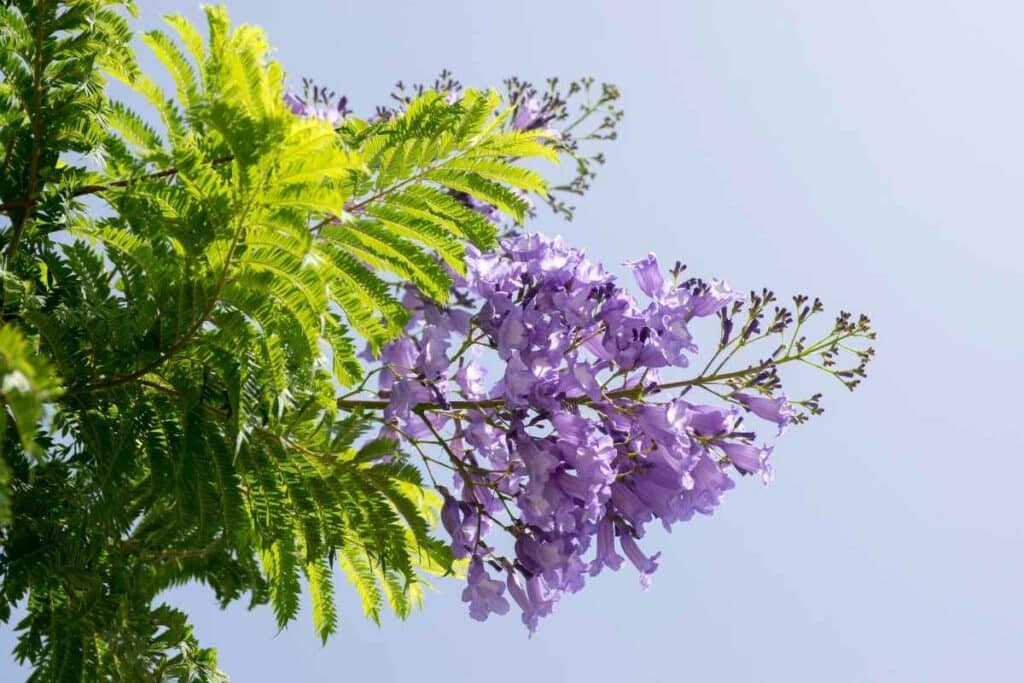
The striking purple hues of the Jacaranda flowers in full bloom bring warmth to any garden, especially in spring.
Unfortunately, Jacaranda trees grow impressively tall and wide, requiring adequate outdoor space.
They also require a warm and humid environment, especially in the warmer southern parts of the US.
In the colder north, you can grow Jacaranda as a houseplant. However, the indoor species does not grow as large as the outdoor plant.
Plant them in sandy, well-draining soil and provide as much sunlight as possible for the purple feather-like flowers to bloom.
Gardeners advise that you grow the plant in an easy-to-clean area as the flowers shed large quantities.
Regular pruning is also necessary to prevent the branches from overgrowing.
Patridge Feather (Tanacetum densum)
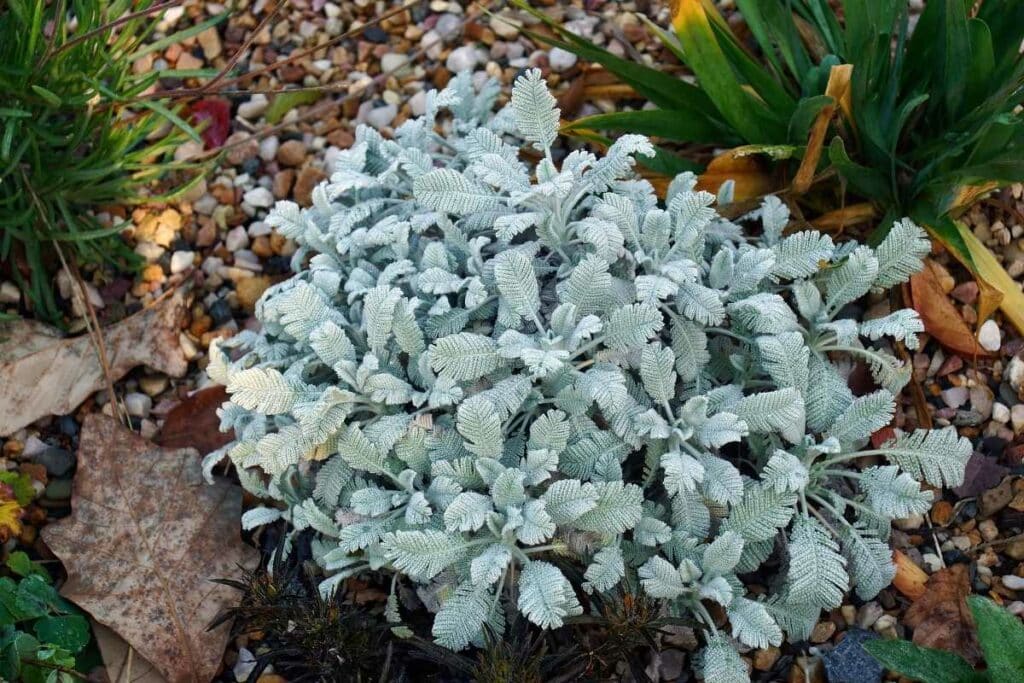
Native to Turkey, the partridge feather plant provides excellent yet unique ground cover in any yard.
The feather-like leaves have a lush silver color with a woolly appearance.
The evergreen shrub grows to about 5 inches tall and bears lovely whitish-yellowish flowers in summer.
If you have several growing, the color contracts of the leaves and flowers create an appealing landscape.
Partridge feather flowers can be cut as house decorations as they also attract butterflies.
As a drought-resistant plant, it grows best under direct sunlight on a rocky patch, among other green plants.
The well-draining rock soil enables it to thrive, so it can crawl and grow in an expensive area.
Unfortunately, partridge feather plants do not do well in wet and humid areas. However, it is an easy plant to take care of, especially as it does not attract pests.
Flame Tree or Royal Poinciana

Delonix regia provides shade in your garden, and the bright red flowers add beauty to any green space. Native to parts of Africa, Royal Poinciana trees love the tropics.
Unfortunately, the root system is large, requiring much-growing space.
Otherwise, it can affect a house’s foundation if you plant it near a building.
Each leaf of the Royal Poinciana has small feather-like leaflets with red flowers that cover the tree in summer.
Royal Poinciana grows from seed, or one can propagate cuttings. As it grows taller, pruning is necessary to reduce the number of intrusive branches.
It thrives in well-draining loamy or sandy soil and requires full exposure to sunlight. Therefore, water it regularly when young but ensure the soil is dry each time.
Since it grows better in warm climates, it goes dormant during winter and does not require watering.
Celosia
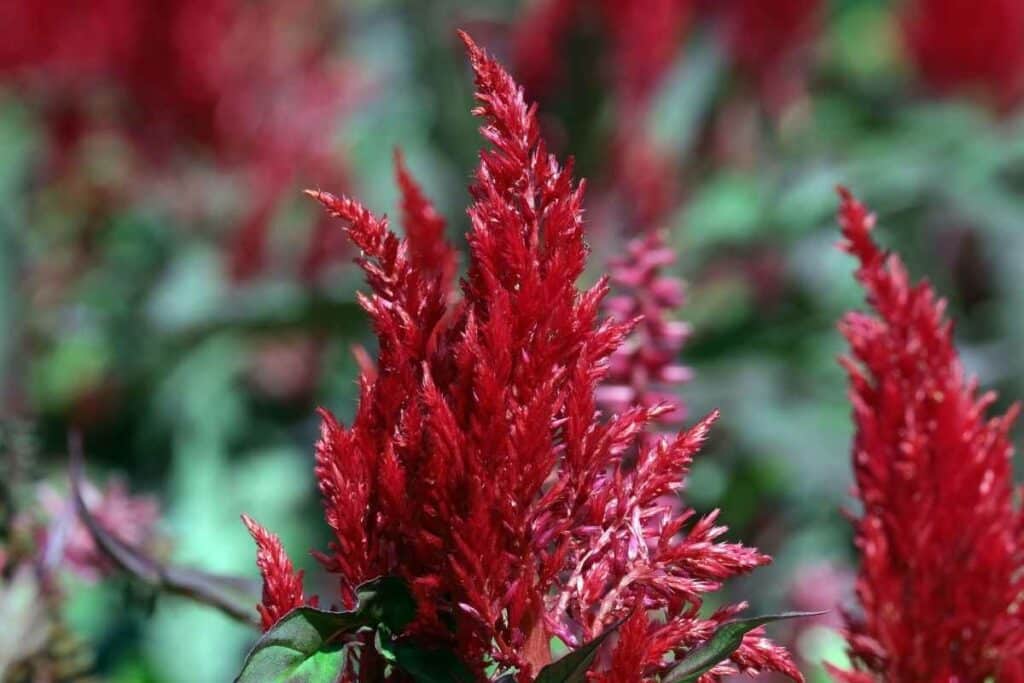
Celosia, also known as celosia plumosa, grows beautifully indoors or outdoors with brightly colored cone-like feathery flowers.
Although it is a perennial plant in warm climates, it is an annual in cold areas.
It only blooms once during mid-summer to late autumn and must be cut down.
However, tall flowers vary in color from red, pink, purple, yellow, and orange, making them excellent for cut flowers.
Plant several celosia plumosa in one container for an impressive display of the brilliant cluster of flowers.
You can grow this plant from seed; since it is low-maintenance, it only requires a sunny spot and regular watering.
Check out our latest guide
Low maintenance plants for Arizona
Although they originate from Asia, they can grow in any warm climate but do not thrive in frosty conditions. So consider moving it indoors when the temperatures are low.
Feather Reed Grass
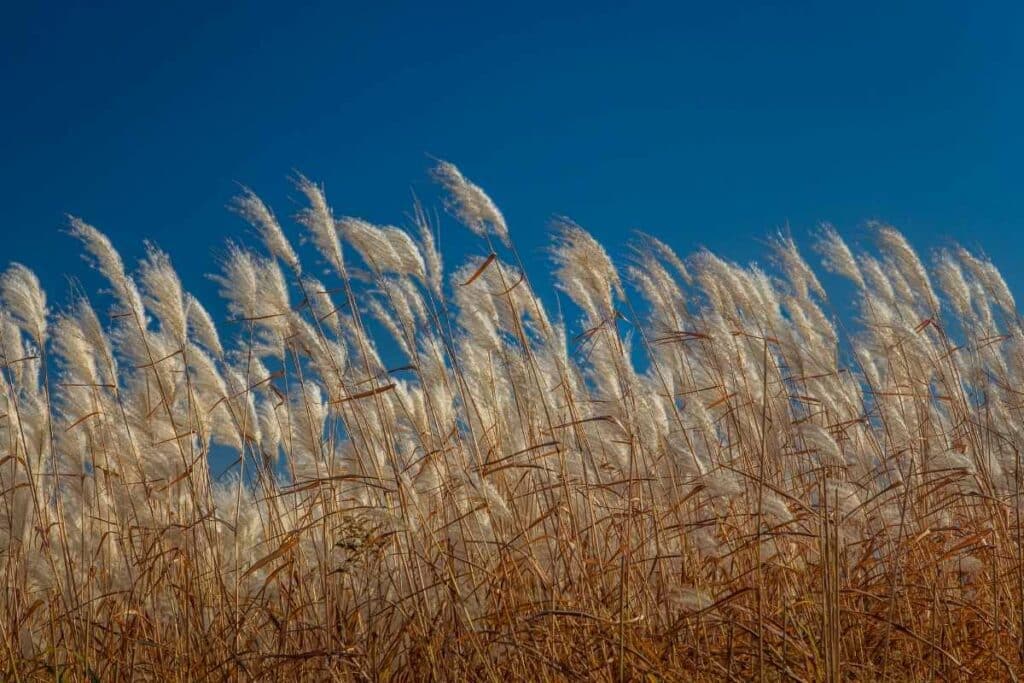
Feather Reed grass is an ornamental grass that provides fluidity and a unique texture in its environment.
In spring, the feathery flowers at the top of the tall stalks change from green to pale pink.
They later turn to seeds that scatter with the wind, sometimes all through winter.
As a result, feather reed grass grows in most dry and wet parts of the US with little to plenty of sunlight.
You can plant it anywhere, as they require minimal care.
These ornamental grass species tolerate all kinds of soil and locations as long as they get adequate water.
Once they are fully grown, mature stalks do not need much watering. However, pruning is sometimes necessary to allow new stalks to soar in spring.
Asparagus Fern (Asparagus setaceus)
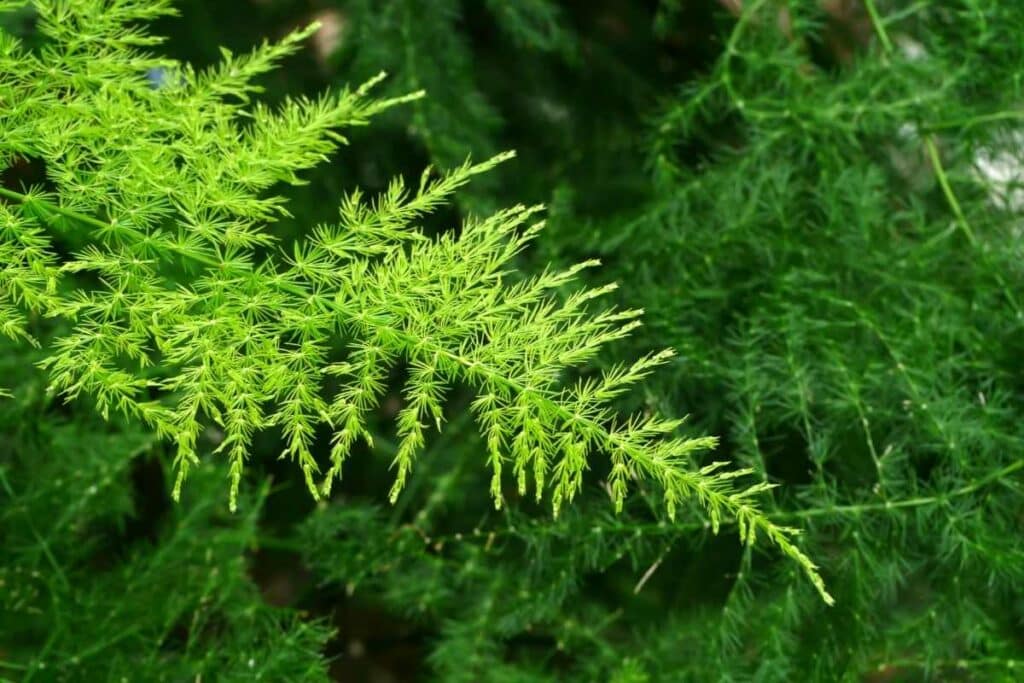
Asparagus fern is a versatile plant with thin-feather-like green leaves perfect for potted indoor decor or mixed flower beds.
It produces brilliant white flowers, followed by reddish berries, which attract various birds.
However, if left unattended, the birds may spread the seeds leading to an overgrowth of the plant.
As a result, in most tropical states in the US, asparagus fern is said to be an invasive plant among gardeners.
As a houseplant, Asparagus grows dense, and most plant owners hang it up, so the lacy leaves elegantly arch out.
To grow this plant, use organic soil that drains water properly.
Although asparagus ferns prefer shaded areas, extremely cool temperatures are not ideal.
Prune a few of the stems every few months to prevent overgrowth, cutting out the old stems first.
Wants to see some really UGLY plants?
Take a look at 9 of the worlds most unique and ugly plants
Fountain Grass
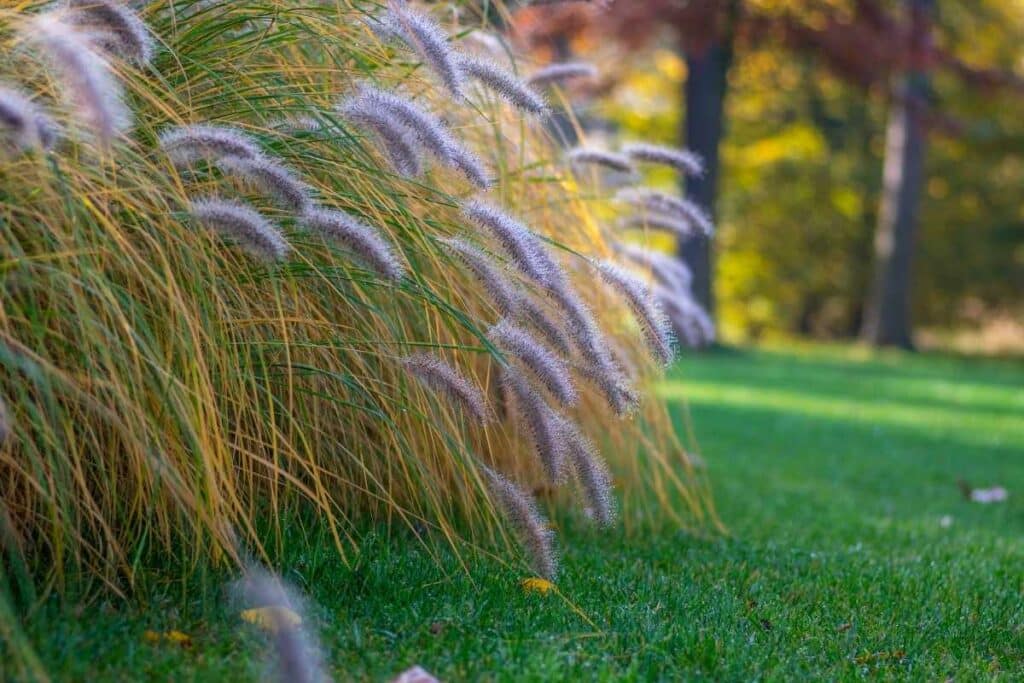
Another ornamental grass species that produces feathery blooms in summer is Fountain grass.
Depending on the species, they invasively produce colorful flowers in summer, through fall, and sometimes winter.
In addition, they are low maintenance since they are drought resistant and do well in most climates.
White Feather Pampas Grass (Cortaderia selloana)
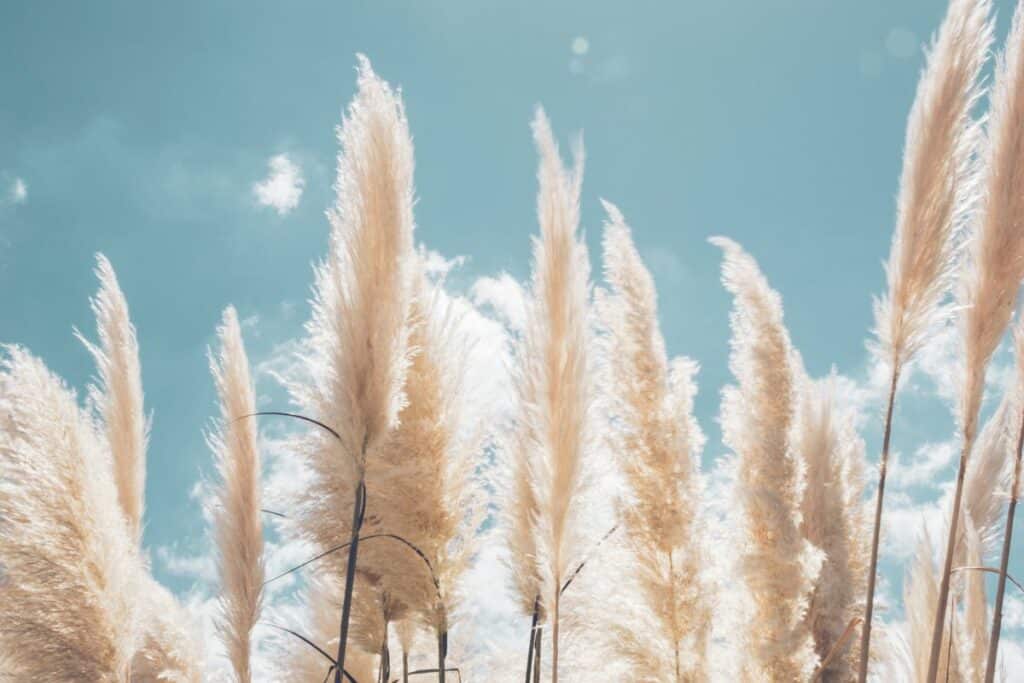
A popular grass-like plant that grows in tall clumps with long yellowish whitish feather-like flowers is Pampas grass.
These tall plants add character to a landscape, but one needs to be careful as they can invade your space. When planting it, leave room for extra growth and prune annually.
Pampas grass does well in a hot and humid climate, especially near coastal lines where the soil is well-draining.
Expose them to direct sunlight for maximum foliage and only water them when it’s extremely dry.
However, the foliage can be a skin irritant so use gardening gloves when handling them.
Maiden Grass
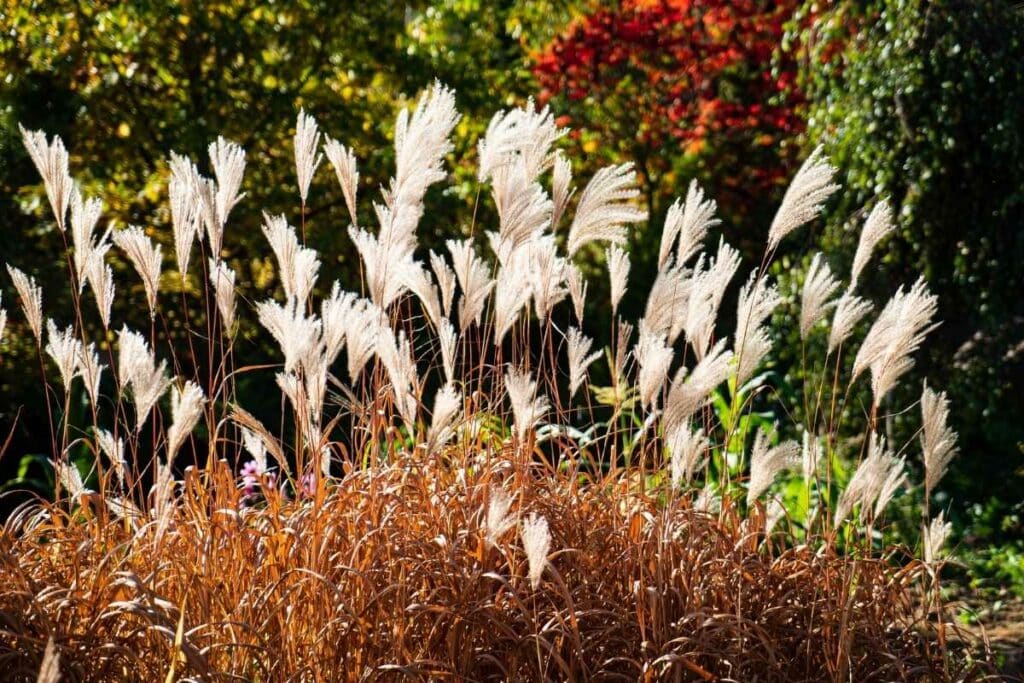
The graceful arch of maiden grass makes it a popular ornamental grass species.
The pale yellow feather-like flowers bloom into silvery white in fall and are lovely when evening light strikes.
However, maiden grass takes longer to grow than any other ornamental grass, reaching maturity after three years.
In addition, they are low maintenance, so grow them in good soil that easily drains, ensuring they receive partial to full sunlight.
Mexican Feather Grass (Stipa tenuissima)
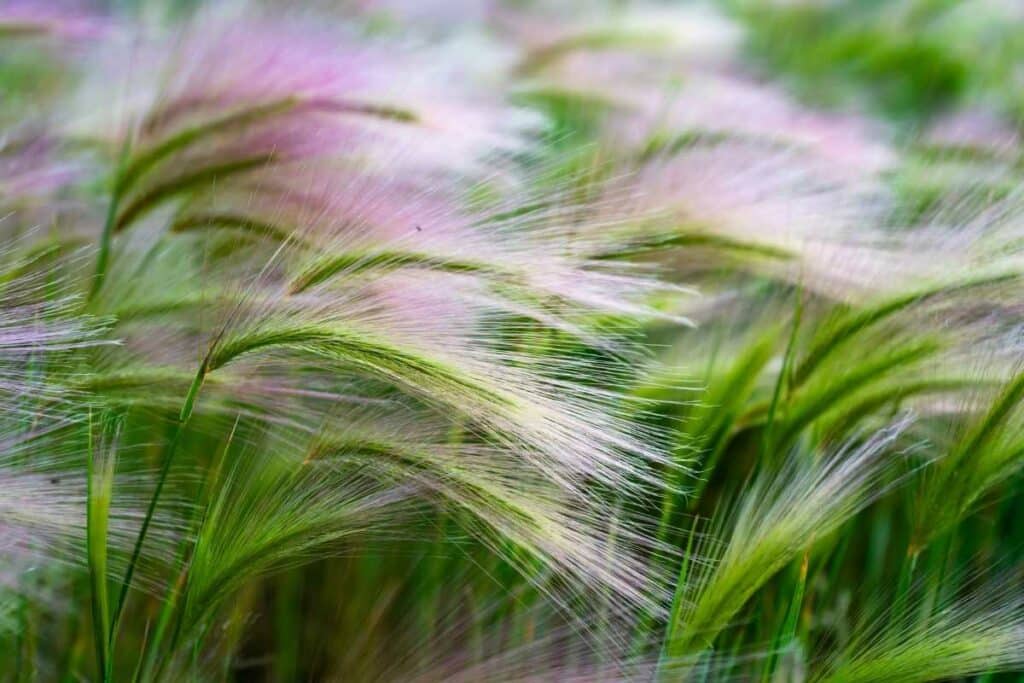
Native to the Americas, Mexican Feather grass has coppery flowers that look like feathers. They sway graciously in the wind bringing drama and color to a landscape.
Flower arrangements sometimes incorporate a few stalks of Mexican feather grass for color contrast.
Mexican feather grass is low maintenance as it grows in properly draining soils and full sunlight.
If you want to create your grass meadow, Mexican feather grass is perfect as it spreads and grows easily.
Conclusion
Any garden where plants look like feathers will attract attention all year round.
Grow some notable feathery plant species as houseplants or outdoors in the front yard for a striking landscape.
Besides creating a pleasant environment, they attract various bird species, butterflies, and bees, adding to the wild beauty.
- Philodendron Care, Varieties, And Aesthetic Home Arrangements
- Best House Plants for Low Light – Thriving Indoors with Minimal Sunlight
- 15 Air-Purifying Houseplants That Release The Most Oxygen
- Purple Houseplants: Your Guide to Dramatic Indoor Beauty
- Philodendron Moonlight Vs. Golden Goddess
- How to Revive Your Rubber Plant: 6 Tips to Help Your Rubber Tree Thrive Again
